Ever wondered why your manual transmission shifts so smoothly? The secret lies in synchromesh transmission, an ingenious system that’s revolutionized driving since its introduction in the 1920s. This technology eliminates that jarring grinding noise when changing gears, making your driving experience much more pleasant.
We’ll demystify how synchromesh transmissions work and why they’re essential in modern vehicles. Unlike older transmission systems that required perfect timing and double-clutching, synchromesh technology synchronizes the rotating speeds of gears before they engage, allowing for smoother, more effortless shifting. It’s the unsung hero behind that satisfying “click” when you shift gears in your car.
What Is Synchromesh Transmission?
Synchromesh transmission is a sophisticated gear system designed to synchronize the rotational speeds of two shafts before they’re engaged. This innovative mechanism eliminates the grinding noise commonly experienced when shifting gears in manual transmissions. Unlike traditional transmissions that require double-clutching techniques, synchromesh systems enable smooth, effortless gear changes with minimal driver effort.
The core function of a synchromesh transmission centers on its ability to match the speed of the input shaft to the output shaft using synchronizer assemblies. These assemblies consist of synchronizer rings, blocker rings, and cone clutches that work together to create friction and equalize rotational speeds. Through this equalization process, gears mesh precisely without damaging their teeth or creating jarring movements.
Modern vehicles universally incorporate synchromesh technology in their manual transmissions, typically featuring synchronizers on all forward gears. Early synchromesh designs from the 1920s only synchronized higher gears, but technological advancements have led to full synchronization across all gear ratios in contemporary transmissions. This evolution has transformed driving from a physically demanding activity requiring precise timing to an intuitive, comfortable experience that anyone can master.
The Evolution of Transmission Systems
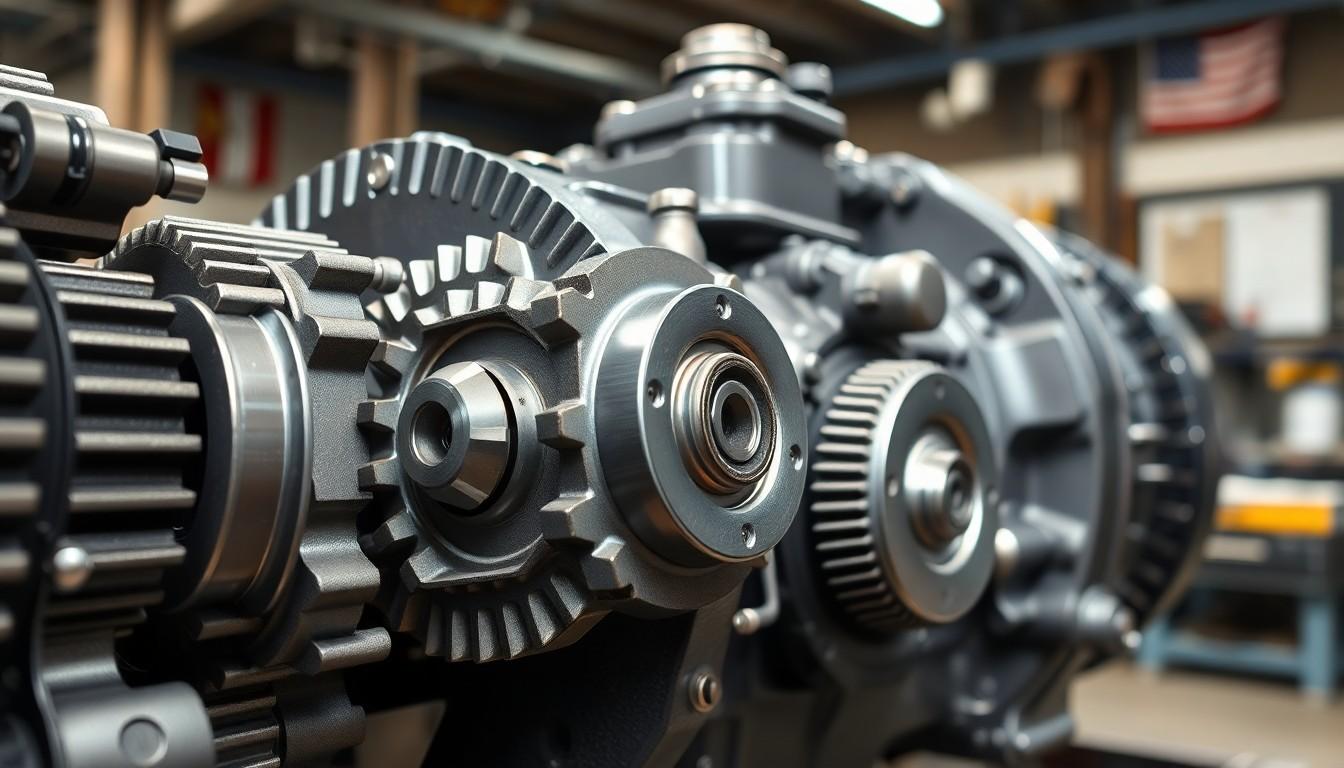
Constant Mesh System
The constant mesh system represents an early stage in transmission technology development. In this system, all gears remain permanently meshed but aren’t connected to the drive shaft until engaged by the driver. This connection happens through a dog clutch, which physically links the selected gear to the drive shaft. Constant mesh systems eliminated the need to physically move gears in and out of mesh during gear changes, reducing wear and tear on gear teeth compared to earlier sliding mesh designs.
Synchromesh Improvement
Synchromesh transmissions added a crucial refinement to the constant mesh system by introducing an intermediary stage in the gear-changing process. This innovation incorporates synchronizer cones and rings that work together to match the rotational speeds of components before engagement occurs. The synchronizing mechanism essentially acts as a small clutch between gears, allowing them to reach identical speeds before locking together. These speed-matching components eliminated the need for drivers to master complex double-clutching techniques, making gear shifting more accessible to everyday drivers.
Comparison with Unsynchronized Gearing
Unsynchronized transmissions require drivers to use the double-clutching technique to match gear speeds manually. This method can potentially allow for faster shifting in skilled hands but results in rougher transitions between gears. Synchromesh systems, while slightly slower in the actual shifting process, deliver a significantly smoother and more user-friendly driving experience. But, the additional mechanical complexity of synchromesh designs makes them somewhat more susceptible to maintenance issues and breakdowns compared to their simpler unsynchronized counterparts. Modern manufacturing techniques and materials have largely mitigated these reliability concerns, making synchromesh the preferred choice for passenger vehicles.
How Synchromesh Transmission Works
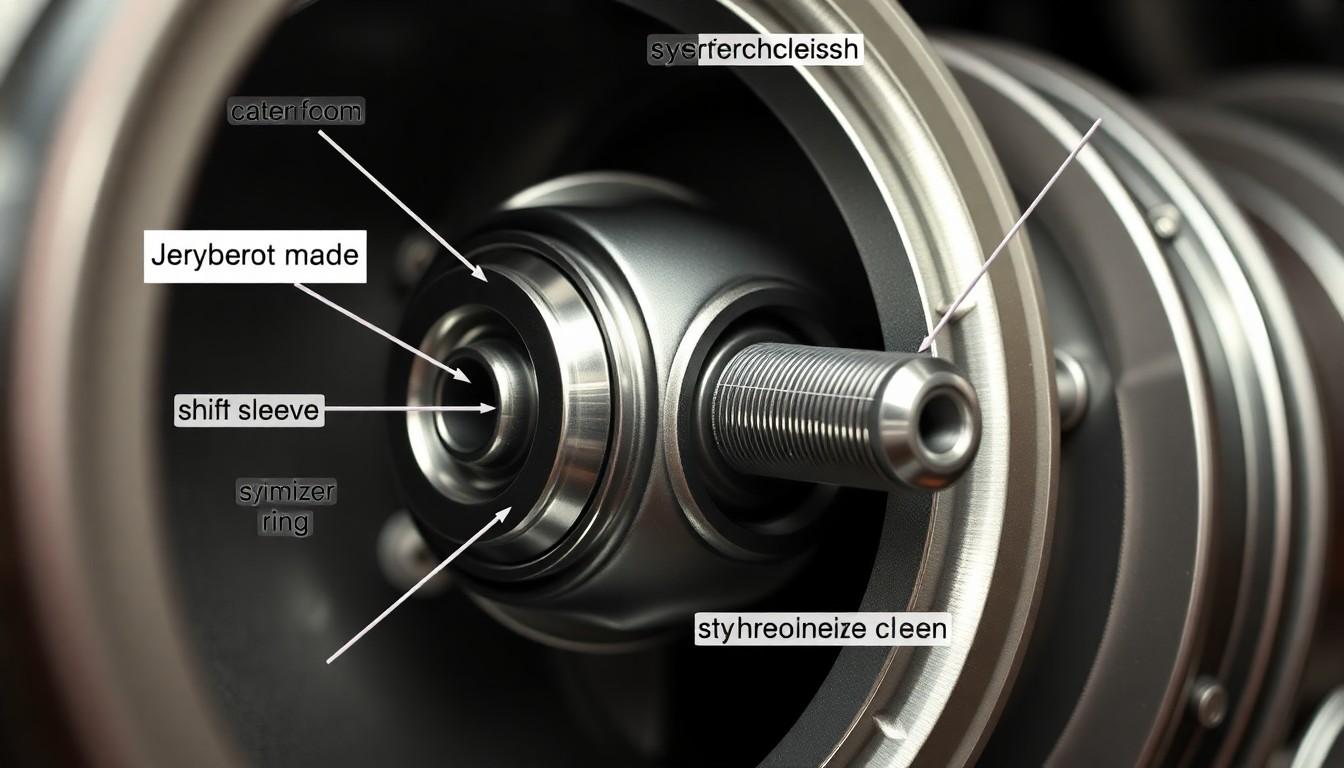
Synchromesh transmission operates through a sophisticated mechanism that synchronizes gear speeds before engagement. This system eliminates the grinding noise and potential damage associated with mismatched gear speeds, creating a smoother driving experience.
Key Components of a Synchromesh System
The synchromesh system relies on several critical components working in harmony. At its core is the synchromesh hub, which connects directly to the drive shaft and serves as the foundation for the entire mechanism. A shift sleeve, controlled by the driver’s movement of the gear stick, slides back and forth to initiate gear changes. The synchronizer cone attaches to each gear and works along with the synchronizer ring to create the necessary friction for speed matching. These components interact with the dog clutch, which is split into two parts in a synchromesh system, facilitating proper gear engagement once speeds are synchronized. Each component plays a crucial role in ensuring smooth transitions between gears without the jarring effects found in older transmission systems.
The Synchronization Process
The synchronization process begins when a driver moves the gear lever to select a different gear. As this happens, the shift sleeve moves toward the selected gear, pressing the synchronizer ring against the synchronizer cone attached to that gear. Friction between these components causes the gear to either accelerate or decelerate until it matches the exact speed of the drive shaft. This speed-matching typically occurs within a fraction of a second, allowing the shift sleeve to continue its movement and fully engage with the gear. Proper synchronization ensures power transmits smoothly from the engine to the wheels without interruption or damage to the transmission components. The entire process happens almost instantaneously, creating the seamless gear changes that modern drivers expect from manual transmissions.
Benefits of Synchromesh Transmission
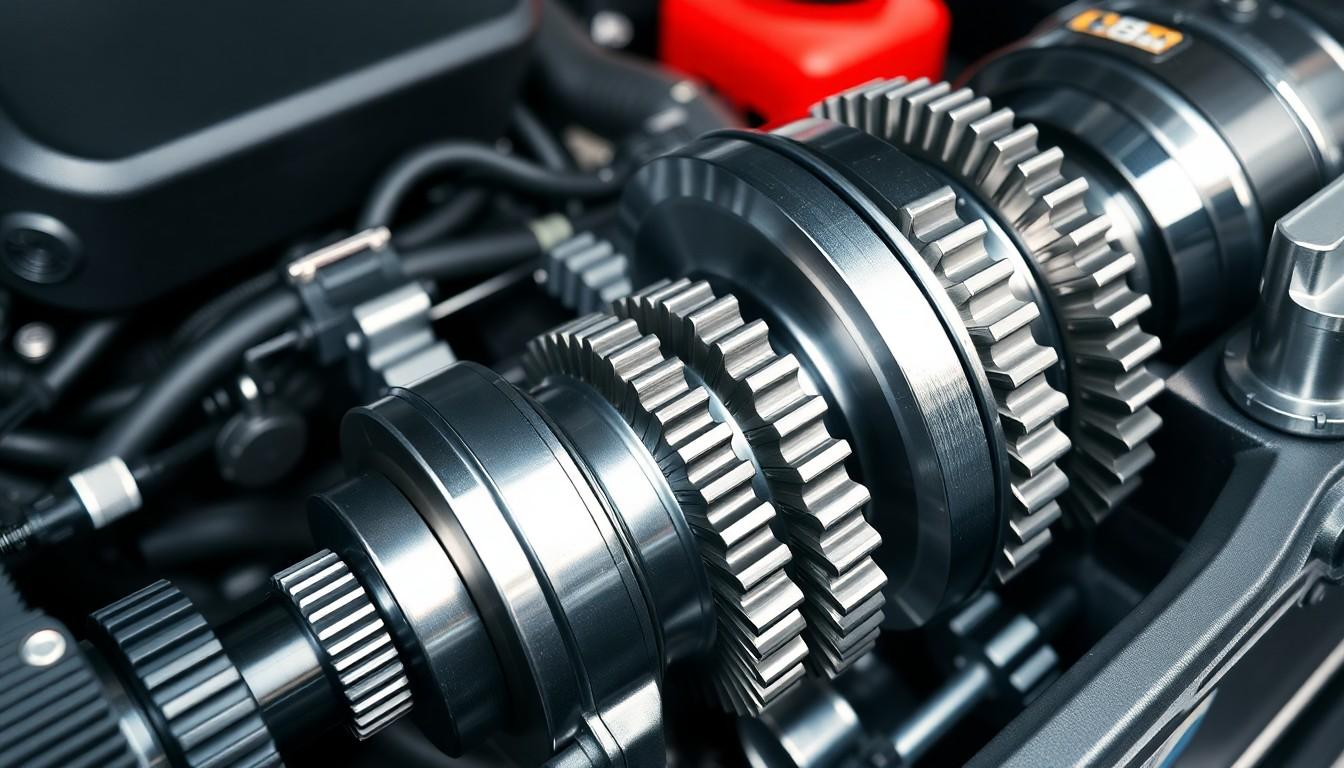
Synchromesh transmission systems offer important advantages over older manual transmission designs. These benefits make them the standard choice in modern vehicles with manual transmissions.
Smoother Gear Shifting
Synchromesh transmissions eliminate the jarring, grinding sensation commonly experienced with older transmission systems. The synchronizer cones and rings work together to match the speed of the gear to the drive shaft before engagement occurs. This speed matching process happens automatically when shifting, creating seamless transitions between gears without the characteristic grinding noise. Drivers no longer need to master complex double-clutching techniques to achieve smooth shifts, as the synchronization happens mechanically through the friction created between the synchronizer components.
Reduced Wear and Tear
Transmission components last significantly longer in synchromesh systems due to the elimination of speed differentials during gear engagement. The synchronizer rings and cones protect gear teeth from damage by ensuring both components rotate at identical speeds before meshing. This prevention of gear clashing extends the lifespan of the entire transmission system. Maintenance costs decrease substantially compared to older transmission designs where gear teeth frequently suffered damage from forced engagement at mismatched speeds. The protective nature of the synchronization process preserves the precision-engineered gear teeth that are essential for power transmission.
Enhanced Driver Experience
Driving comfort improves dramatically with synchromesh transmissions through their intuitive operation. The physical effort required to change gears decreases as drivers don’t need to perfectly time their shifts or apply excessive force to the gear lever. Learning to drive a manual transmission vehicle becomes more accessible to beginners since the synchronization mechanism accommodates minor timing errors during shifts. The elimination of jerky transitions between gears provides a smoother ride for all passengers and allows drivers to maintain better control of the vehicle during acceleration and deceleration. Modern synchromesh systems respond quickly to driver inputs, creating a satisfying and connected driving experience that many enthusiasts prefer over automatic transmissions.
Synchromesh vs. Non-Synchromesh Transmissions
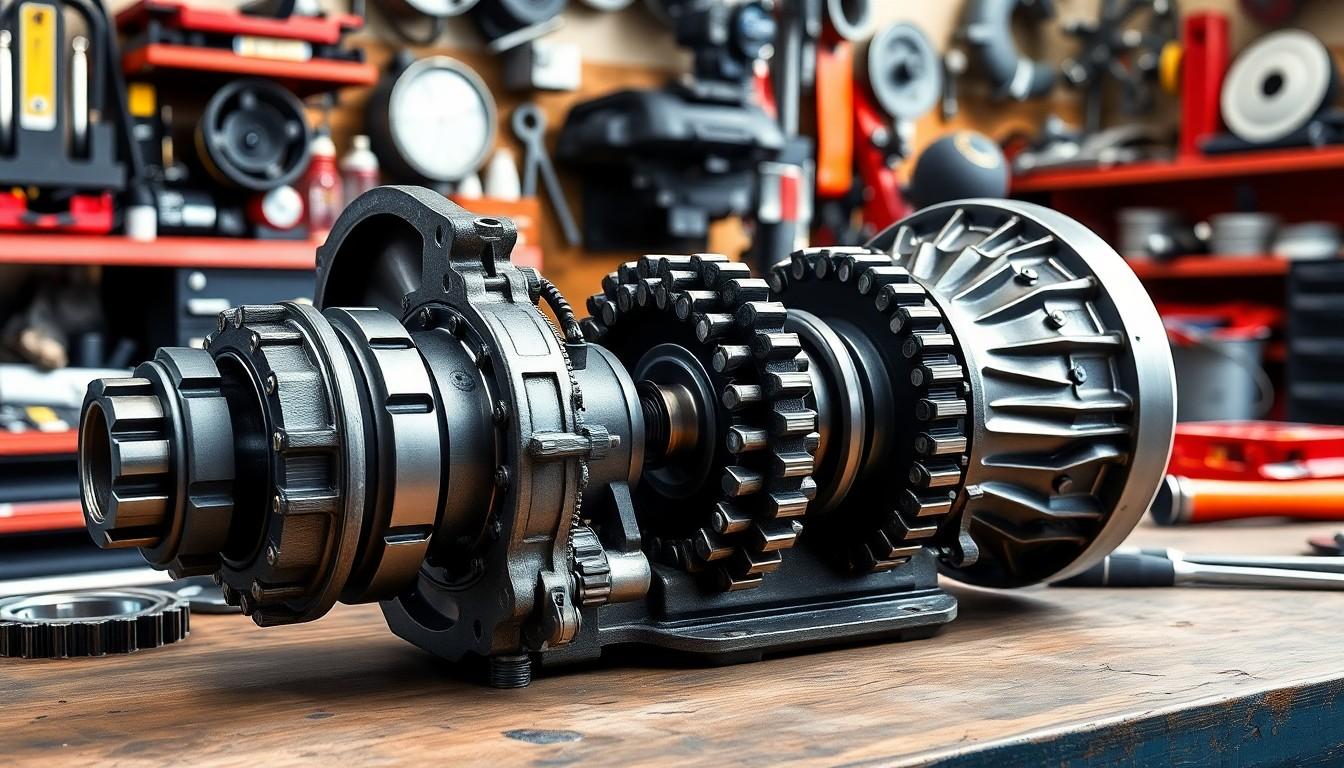
Synchromesh Transmissions
Synchromesh transmissions revolutionized driving by automatically matching gear speeds during shifts, eliminating the need for complex techniques like double-clutching. These transmissions feature specialized synchronizer rings and cones that create friction to adjust rotational speeds until they match perfectly. Earl Avery Thompson invented this technology in 1919, with Cadillac becoming the first manufacturer to carry out it in production vehicles in 1928. Modern passenger cars universally employ synchromesh technology on forward gears, making them significantly easier to operate for drivers of all skill levels. The synchronized system creates a smooth, quiet operation that protects transmission components from unnecessary wear and stress.
Non-Synchromesh Transmissions
Non-synchromesh transmissions, commonly known as crash gearboxes, operate with either sliding-mesh or constant-mesh designs that lack synchronizing components. These older transmission systems require drivers to manually match engine RPM to the gear being selected through precise timing and throttle control. Without proper technique, these transmissions produce distinctive grinding or “crashing” noises when gears attempt to mesh at different speeds. Vehicles equipped with non-synchromesh transmissions include many classic cars, older trucks, and agricultural tractors where the mechanical simplicity was prioritized over ease of use. Drivers must develop specialized skills like double-clutching and rev-matching to change gears effectively, making these transmissions more challenging for everyday use but appreciated by some enthusiasts for their direct mechanical connection and historical significance.
Common Issues and Maintenance Tips
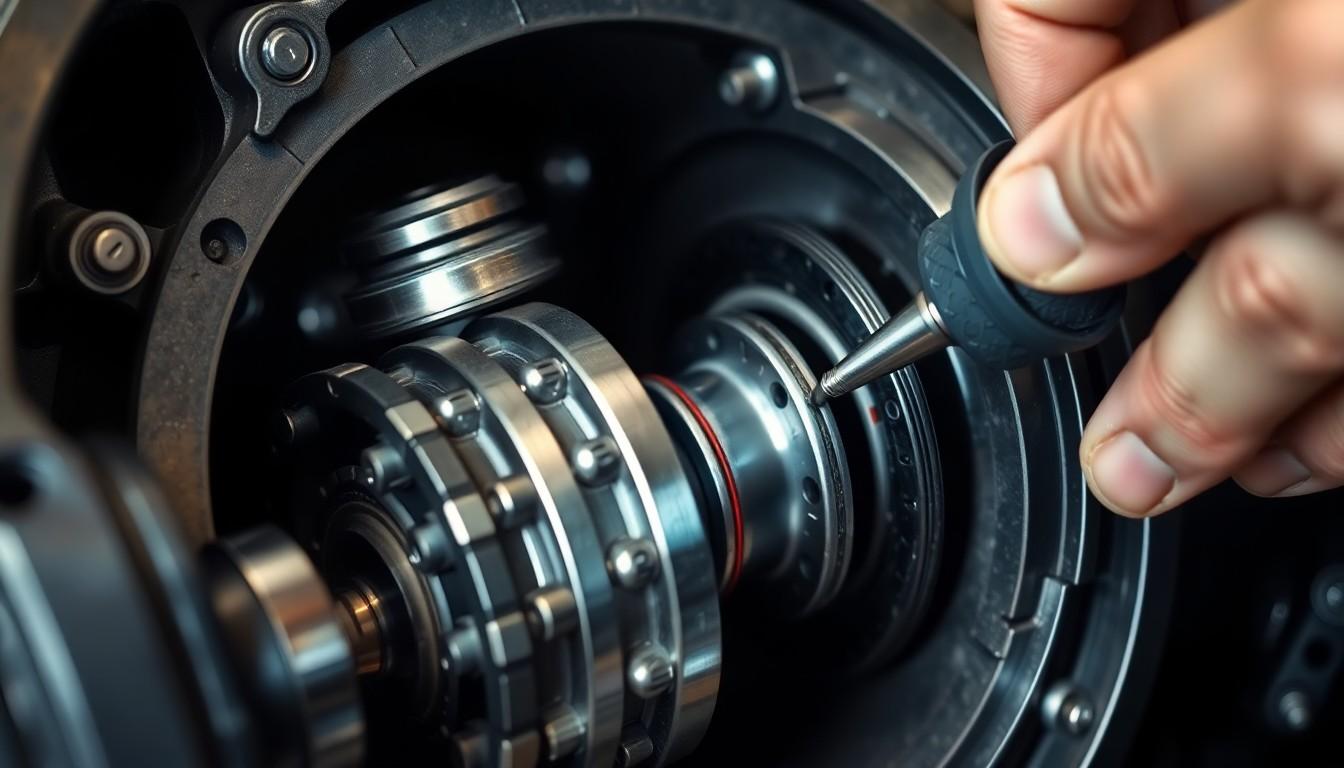
Common Issues
Synchromesh transmissions, while revolutionary in their design, face several recurring problems due to their complex mechanical nature. Wear patterns develop on synchronizer rings and cones after extended use, causing difficult gear shifts and grinding noises. Transmission fluid degradation reduces the effectiveness of the synchronization process, leading to increased friction and heat generation. Physical damage to shift sleeves prevents proper engagement with gear teeth, resulting in the transmission popping out of gear unexpectedly. Components can also experience metal fatigue from the repeated stress of gear changes, particularly in vehicles driven aggressively or used for towing.
Transmission Breakdowns
Synchronized manual transmissions experience more frequent breakdowns than their unsynchronized counterparts. This higher failure rate stems directly from the additional complexity and moving parts within the synchromesh system. The synchronizer rings, shift sleeves, and blocking rings create multiple potential failure points that don’t exist in simpler transmission designs. When these components fail, drivers typically notice immediate symptoms like grinding during shifts or complete inability to engage certain gears.
Wear and Tear Signs
The synchronizers and shift sleeves deteriorate gradually with normal use, compromising smooth gear transitions over time. Early warning signs include resistance when shifting into exact gears, particularly noticeable during cold starts. Grinding noises that occur even though proper clutch operation indicate worn synchronizer components that can no longer effectively match gear speeds. Increased force required for shifting, especially in high-mileage vehicles, signals excessive wear in the cone surfaces where critical friction occurs during synchronization.
Shifting Performance
Gear changes in synchromesh gearboxes take slightly longer than in unsynchronized transmissions due to the speed-matching process. The synchronizers need milliseconds to equalize the rotational speeds between components before full engagement occurs. This inherent delay, though minimal, explains why race cars and heavy-duty commercial vehicles sometimes use non-synchromesh transmissions for applications where shifting speed takes priority over smoothness. For everyday driving, but, this minor delay remains imperceptible compared to the important comfort benefits provided.
Maintenance Tips
Proper maintenance extends the lifespan of synchromesh transmissions substantially and preserves optimal shifting performance. Regular inspections reveal developing issues before they cause catastrophic failures. Transmission fluid maintenance serves as the foundation of synchromesh care, with clean fluid providing essential lubrication to friction surfaces. Proper driving techniques minimize stress on synchronizer components, particularly during the break-in period for new vehicles or after transmission rebuilds.
Regular Inspection Practices
Transmission health assessments should occur at every oil change interval, focusing on fluid condition and shifting performance. Listen for unusual noises during gear changes, such as grinding, clicking, or whining sounds that indicate developing problems. Observe shift lever movement, noting any excessive play or vague engagement points that might suggest worn shift forks or synchronizer assemblies. Check for transmission fluid leaks around the bell housing, input shaft seal, and pan gaskets, as fluid loss directly impacts synchronizer performance.
Fluid Maintenance
Transmission fluid serves as both lubricant and hydraulic medium in the synchronization process, making its condition critical. Check fluid levels monthly, ensuring the transmission contains the manufacturer-specified amount and type of oil. Replace transmission fluid according to the service schedule, typically every 30,000-60,000 miles depending on driving conditions. Signs of contaminated fluid include dark coloration, burnt smell, or visible metal particles, all requiring immediate attention and fluid replacement.
Proper Shifting Techniques
Driving habits directly impact synchromesh longevity through mechanical stress management. Apply gentle pressure when shifting rather than forcing gears, allowing synchronizers sufficient time to match speeds. Release the clutch smoothly after each shift to prevent shock loading of transmission components. Avoid shifting at excessively high RPMs which creates greater speed differentials for synchronizers to overcome. Downshift sequentially through gears rather than skipping multiple ratios, reducing the workload on individual synchronizer assemblies.
Professional Service Recommendations
Schedule comprehensive transmission inspections with qualified mechanics every 50,000 miles or when shifting problems emerge. Professional evaluation includes gear engagement testing, synchronizer function assessment, and internal component inspection where necessary. Transmission specialists can identify worn synchronizer rings or damaged shift forks before they cause catastrophic failures. Rebuilding services typically replace all wear items simultaneously, restoring factory-like shifting performance and extending transmission life considerably.
Applications in Modern Vehicles
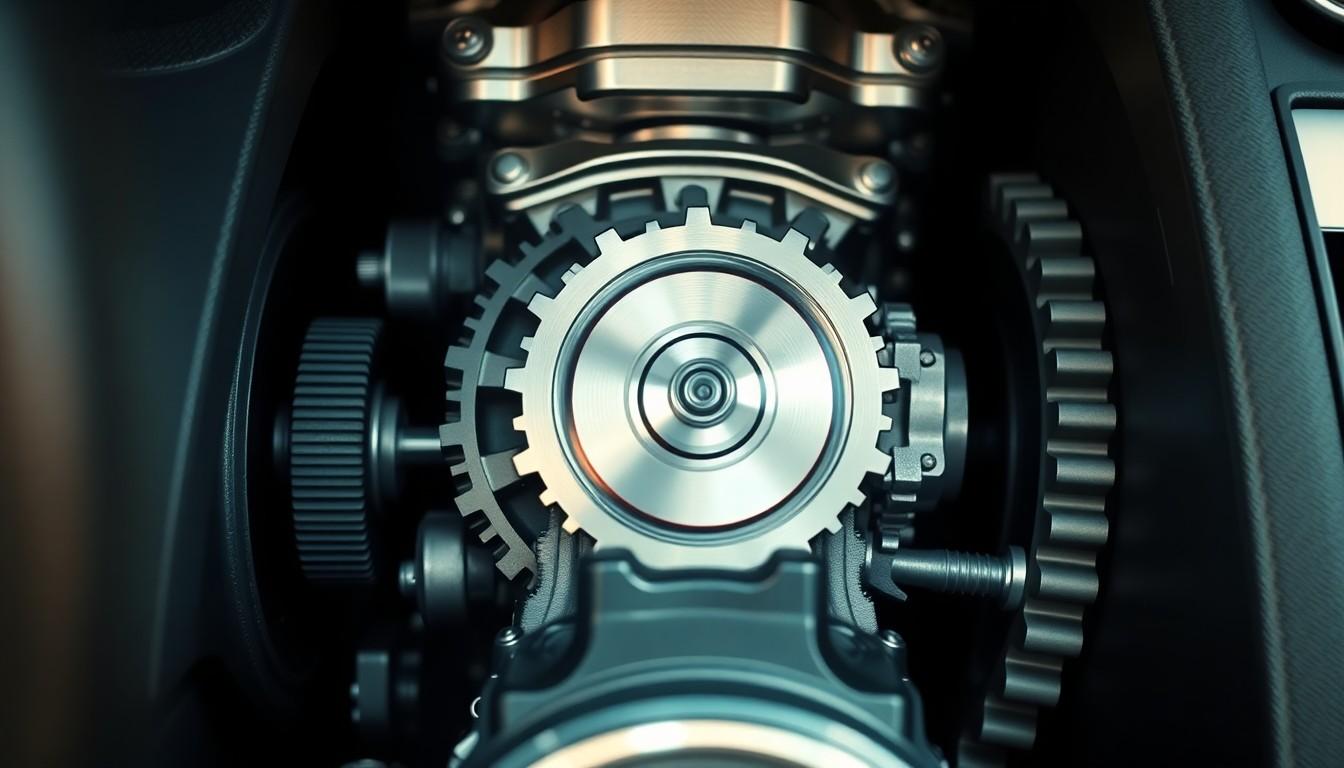
Synchromesh transmissions have become the standard in manually operated transmissions across the automotive industry. These systems make gear shifting significantly easier and smoother, reducing the complexity and skill required for drivers to change gears effectively. Manual transmission vehicles benefit from synchromesh technology as it represents a refined evolution of the constant mesh system, adding an additional synchronization stage that enhances efficiency during gear transitions.
Most contemporary passenger cars equipped with manual transmissions incorporate synchromesh gearboxes on all forward gears. This widespread adoption exists because synchromesh provides an optimal balance between driver control and operational ease. Automotive manufacturers prefer these systems as they deliver a more refined driving experience compared to older transmission technologies.
Performance considerations reveal an interesting trade-off – synchromesh transmissions offer smoother gear changes but may experience more frequent mechanical issues than their unsynchronized counterparts. Even though this potential drawback, the superior user experience and reduced learning curve make synchromesh the preferred choice in modern vehicle design. The technology continues to evolve with improvements in materials and design that address reliability concerns while maintaining the smooth shifting characteristics drivers expect.
Conclusion
Synchromesh transmission has truly revolutionized the driving experience since its inception. This ingenious system has transformed gear shifting from a demanding skill to an intuitive action that drivers perform with ease.
By synchronizing rotating speeds between gears before engagement the technology eliminates grinding noises and protects valuable transmission components. The sophisticated mechanism of synchronizer rings cones and shift sleeves work in harmony to deliver smooth transitions between gears.
While requiring more maintenance than their unsynchronized counterparts modern synchromesh transmissions offer unmatched benefits in user experience and accessibility. They’ve become the industry standard for manual transmissions in passenger vehicles worldwide.
For enthusiasts and everyday drivers alike synchromesh technology continues to deliver that satisfying connected driving experience that keeps manual transmissions relevant in today’s automotive industry.
Frequently Asked Questions
What is a synchromesh transmission?
A synchromesh transmission is a technology in manual transmissions that synchronizes the rotational speeds of gears before they engage. Introduced in the 1920s, it eliminates the grinding noise during gear changes by using synchronizer assemblies (rings, blocker rings, and cone clutches) to match the speed of input and output shafts, allowing for smoother shifting in modern vehicles.
How does a synchromesh transmission work?
When shifting gears, the synchronizer mechanism briefly connects the gear to the shaft through friction before they fully engage. This creates resistance that equalizes the rotational speeds of the components. Once synchronized, the gears can mesh perfectly without grinding or damage. The entire process happens in milliseconds when you move the gear lever, making shifting feel seamless.
What are the benefits of synchromesh transmissions?
Synchromesh transmissions offer several advantages: smoother gear shifts without jarring or grinding, reduced wear and tear on transmission components, more intuitive operation for drivers of all skill levels, and an enhanced driving experience. They eliminate the need for complex techniques like double-clutching, making manual driving more accessible while still providing the connected feeling enthusiasts enjoy.
How do synchromesh transmissions differ from non-synchromesh transmissions?
Non-synchromesh transmissions (crash gearboxes) lack synchronizing components and require drivers to manually match engine RPM to gear speed through techniques like double-clutching. They’re more mechanically simple but harder to operate. Synchromesh transmissions automatically synchronize gear speeds before engagement, making shifting easier and quieter while protecting components from wear caused by mismatched speeds.
What common issues affect synchromesh transmissions?
Common synchromesh issues include worn synchronizer rings and cones, degraded transmission fluid, and damaged shift sleeves. These problems typically manifest as difficult gear shifts and grinding noises. Due to their complexity, synchronized transmissions experience more frequent breakdowns than unsynchronized ones. Regular maintenance and proper driving techniques are essential to extend the system’s lifespan.
How should I maintain my synchromesh transmission?
Maintain your synchromesh transmission by regularly checking and changing transmission fluid according to manufacturer recommendations, having professional inspections to catch wear issues early, shifting gently without forcing gears, avoiding excessive RPMs during shifts, and allowing the synchronizers to work properly by pausing briefly during shifts. These practices will significantly extend your transmission’s lifespan.
Are synchromesh transmissions used in all modern manual vehicles?
Yes, virtually all modern passenger vehicles with manual transmissions use synchromesh technology. Most feature synchronizers on all forward gears, offering an optimal balance between driver control and ease of operation. While they may have more mechanical components than older designs, improvements in materials and manufacturing have addressed reliability concerns while maintaining the smooth shifting experience drivers expect.
Why might some drivers prefer manual transmissions with synchromesh?
Some drivers prefer manual transmissions with synchromesh because they provide a more engaging and connected driving experience while eliminating the difficulty of older manual designs. These transmissions offer greater control over the vehicle, better fuel economy in some cases, simpler maintenance than automatics, and the satisfaction of mastering a driving skill – all without the jarring gear changes of non-synchromesh systems.













